Friday, March 18. 2016
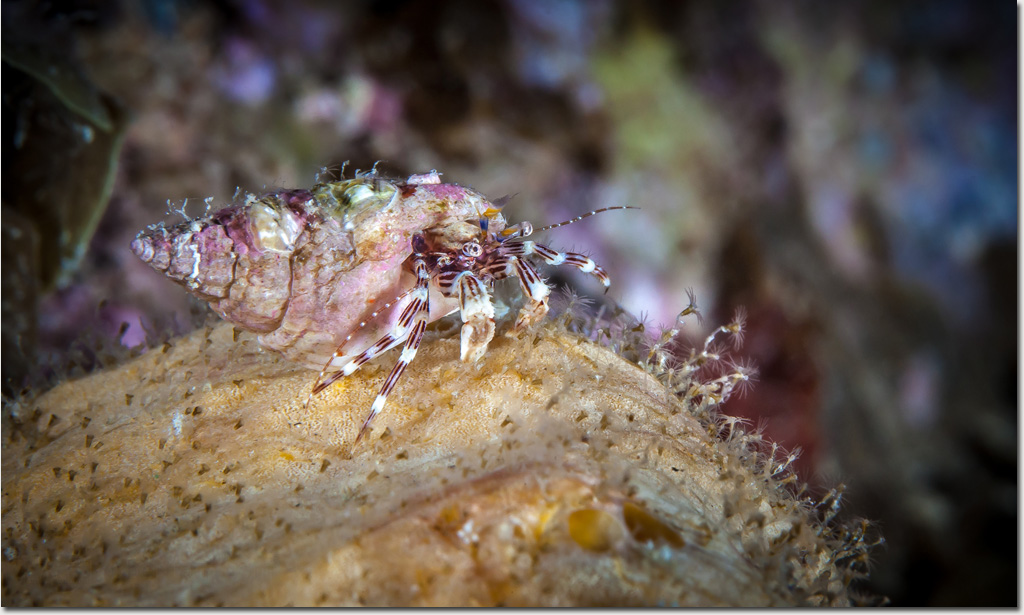
In the past I had described photographing hermit crabs as ‘low hanging fruit’ but this guy was not so easy.
Clarrie's Hermit Crab (Pagurixus handrecki) here under Rapid Bay Jetty is tiny, about the size of my little fingernail and was marching furiously around the top of its own private little hill.
Despite the diminutive size it looked so busy and so full of pride that I nearly missed the moment when it reached the top before starting back down the other side.
Photo: Robert Rath, ‘Top of the Hill’, 1/100s f22 ISO400 100mm
Tuesday, March 15. 2016
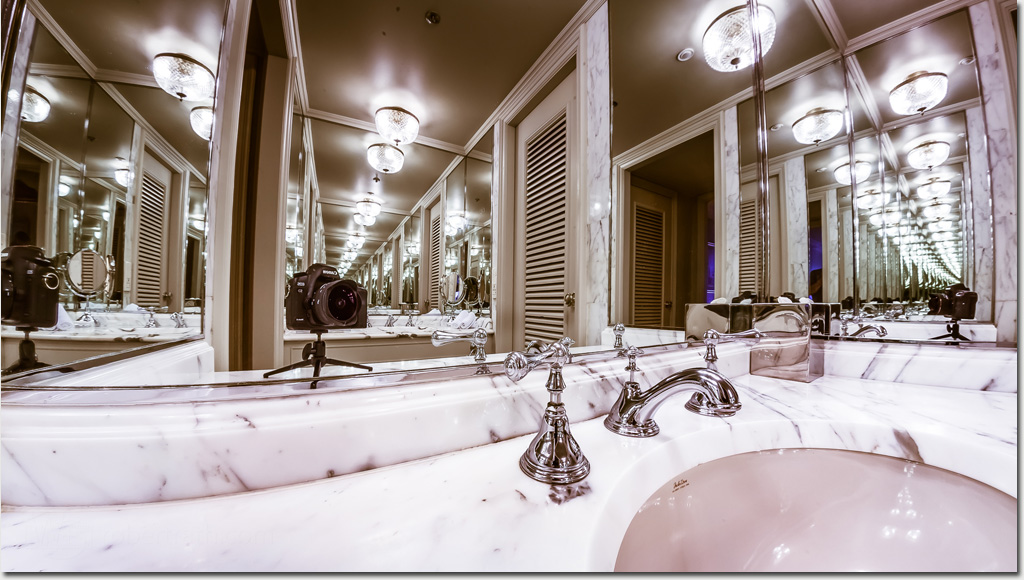
Everywhere I looked I saw taps and taps and more taps.
It was not the mirrors that made this bathroom extend on forever in all directions.
It was all those taps.
Photo: Robert Rath, 'Infinity Bathroom', 0.3s f/18 ISO200 15mm
Monday, March 14. 2016
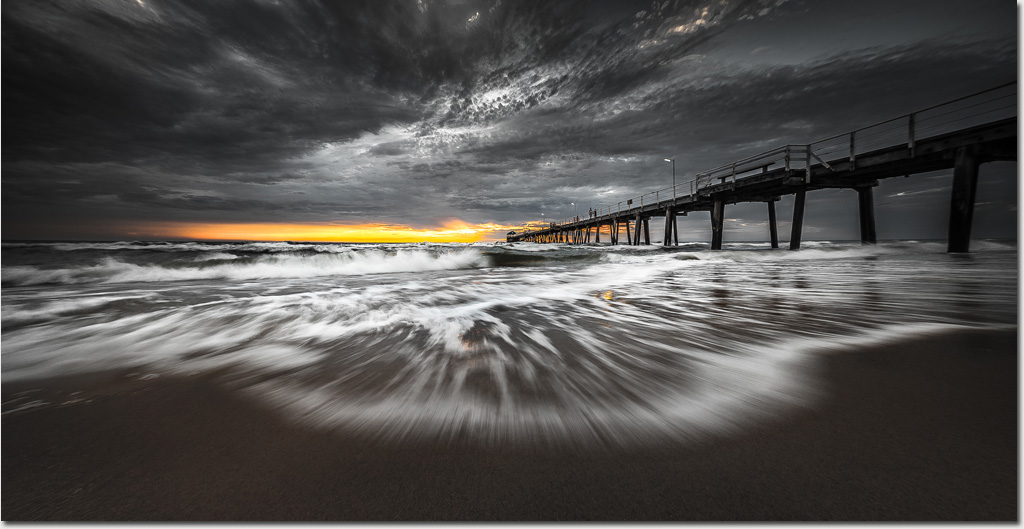
It's like playing dare with the ocean.
I watch for a while. Some surges rush by, water pushing and swirling past ankles and splashing my knees.
Other incoming waves stack up full of pent-up fury before consuming themselves in the retreating backwash and leaving the sand wet and bare.
I place my bet, position my tripod in the retreating backwash and set off the timer.
Three, two, one, eek (not the word I actually used), grab tripod and lift it all clear as a huge rush of water catches me by surprise drenching my shorts and nearly toppling me over.
Clean the splashes of salty water from the lens then try again, again, three, two, one, ...
Sure, I like to capture a dramatic moment but I can't deny I like the rush.
Photo: Robert Rath, 'It's a Rush, 1/5s f/14 ISO100 15mm
Sunday, March 13. 2016
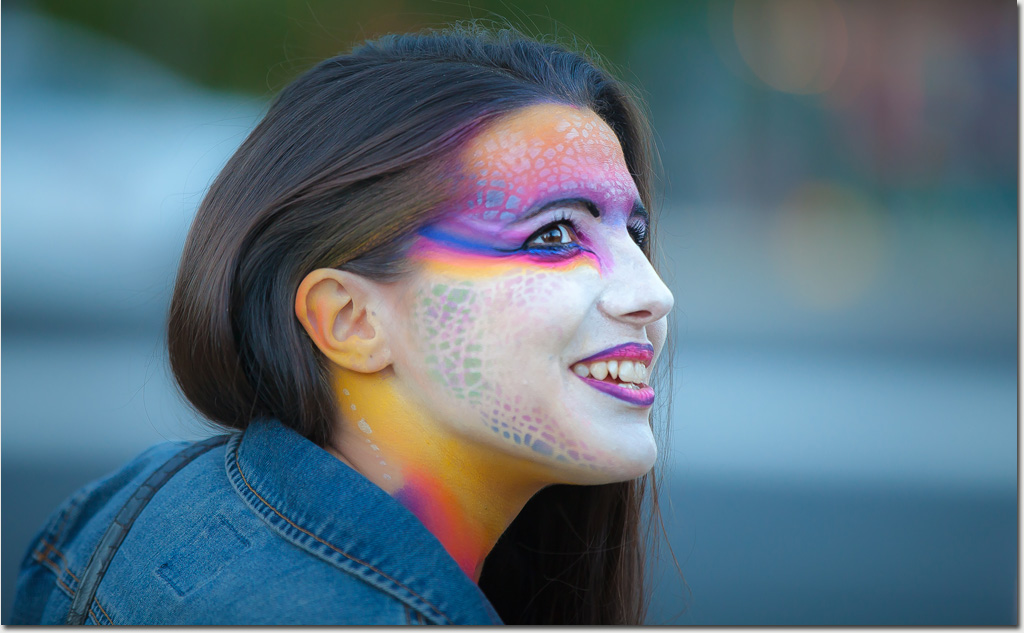
The realm of art that exists somewhere between makeup and costume called body painting is obvious when walking through the Garden of Unearthly Delights.
Body painting has long been a part of people and ceremony but now more than ever we do it just for the fun of it and the art of it. An opportunity for the artist to bring some normally hidden aspect of the wearer into visual expression.
I love the art on this girl's face as it transforms her in to some reptilian otherworldly creature. An almost alien beauty, I can't help wondering if what I see represents some deeper aspect of her personality or if it is all just part of the fun of being in The Garden.
Photo: Robert Rath, 'A Different Face' 1/320s f/8 ISO800 200mm
Friday, March 11. 2016
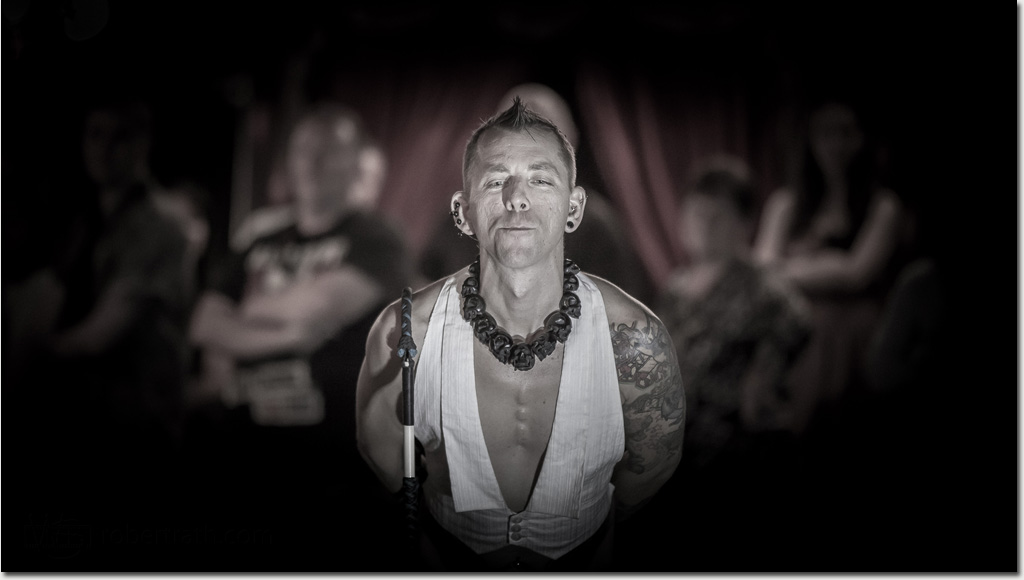
He's not just a pretty face with pursed lips and interesting piercings but courageous as well.
Moments earlier those pursed lips held a single long stemmed flower. A moment after that the flower was struck from its tenuous grip by the supersonic crack of a stockman's whip.
Oh she was good and she's got him whipped good too in the Garden of Unearthly Delights, Adelaide Fringe Festival.
Photo: Robert Rath, 'Whip It Good' 1/80s f/2.8 ISO3200 200mm
Thursday, March 10. 2016
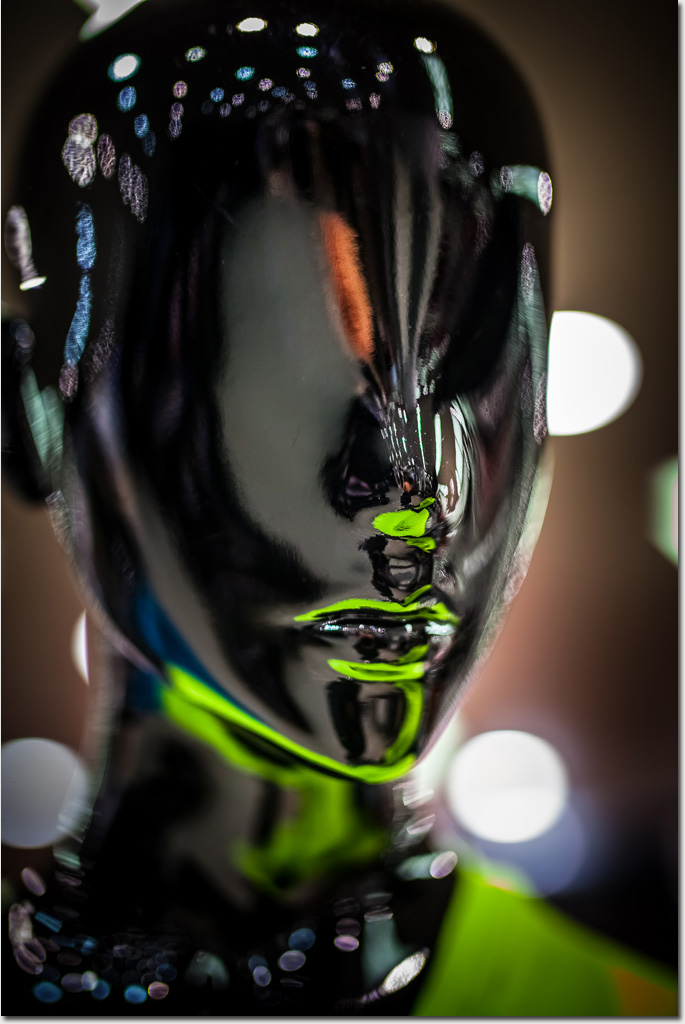
Penny is really 'out there'. She's been working hard in Penneys Stores Galway for some time now and she is beginning to get noticed.
At first customers did not see her or if they noticed something at all it was some vague form underneath the latest impossible to wear fashion offering.
Over time she began to get noticed more and more and now management has a new problem, she is noticed more than the outfits she is models.
Perhaps it's time for Penny to think about a career change and a promotion. I think she's earned it.
Photo: Robert Rath, 'Penny' 1/250s f/1.8 ISO800 50mm
Tuesday, March 8. 2016
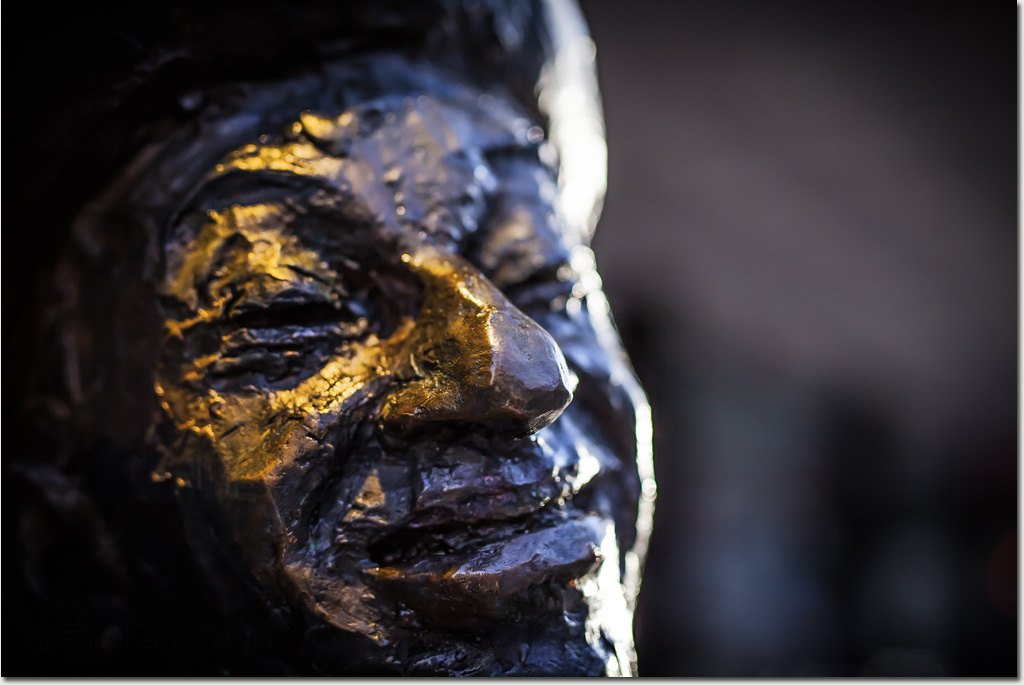
Mo's cool. He's been hanging around Hindley Street for a few years now so he almost seems part of the furniture.
When I first met Mo he caught me completely by surprise. Not his fault though as I should really have been looking where I was going.
Being the gentleman he is thought he did not gloat at my fright or glower at my clumsiness. He simply nodded, gave me that impish smile and let me go on my way.
On the odd occasion, and from the corner of my eye, I think I've caught him dipping his hat to some unseen acquaintance or lady friends though I never could be certain.
Perhaps if I am both patient and lucky and with camera at hand I might just catch it on film.
Photo: Robert Rath, 'Mo' 1/800s f/1.8 ISO100 50mm
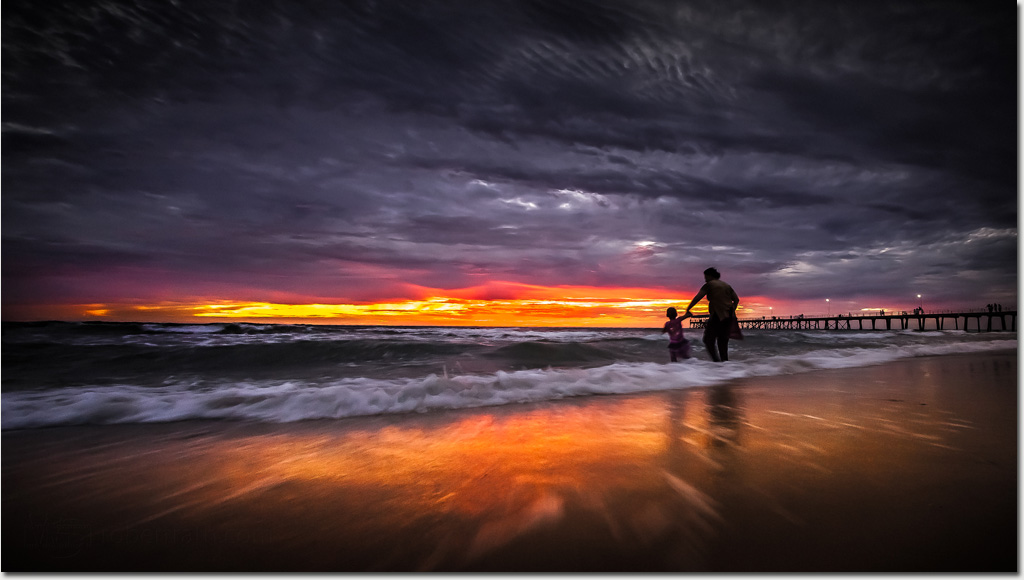
Fifteen minutes after sunset the colour in the west reddened and deepened becoming more and more intense.
Despite the richness of colour on the horizon there was not enough light to remove the stormy gloom making he sky all the more surreal.
... and then she ran out into the surf chasing the last of the light.
Photo: Robert Rath, 'The Last of the Light, 1/8s f/18 ISO400 15mm
Sunday, March 6. 2016

When I was presented with the wine list I knew we were somewhere special.
I grew up in the picturesque German heritage town of Tanunda in the Barossa Valley, a region of vineyards, wineries and winemakers. As a child the idea of an Asian restaurant anywhere in the Barossa would have skirted the realm of scandal and novelty and certainly been a place my parents would never have entertained experiencing.
So it was with a sense of trepidation we brought my mum, now well into her eighties, to FermentAsian in Tanunda for a family celebration.
The food was amazing as expected but the real surprise was the wine cellar and its deep expression of wines the world over. A real surprise for me in my old home town.
Any yes mum loved the new and interesting food, albeit with a little encouragement.
As for the title, did you get the pun?
Photo: Robert Rath, 'Behind Bars', 1/60s f/2.0 ISO1600 50mm
Saturday, March 5. 2016
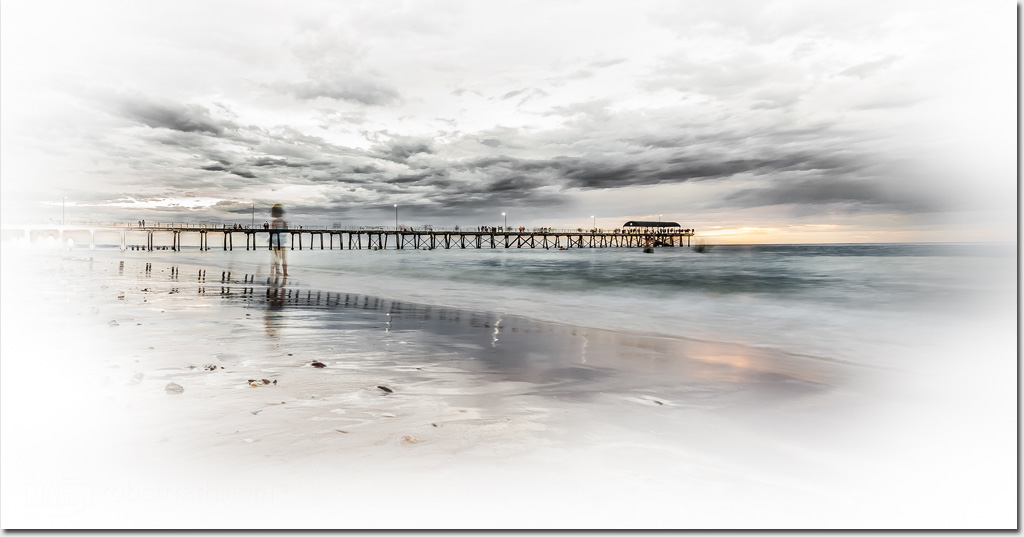
What colour is water anyway when it is supposed to be colourless. Yet we talk about the deep blue ocean, or sea green, or a golden pond at sunset or dawn.
Water reflects and refracts and absorbs and distorts and yet colours our world without any colour at all.
Actually this image really isn't about the colour of water at all. I just loved feel, the style and the not so obvious play on words.
Photo: Robert Rath, 'The Colour of Water', 2s f/20 ISO250 15mm
Friday, March 4. 2016
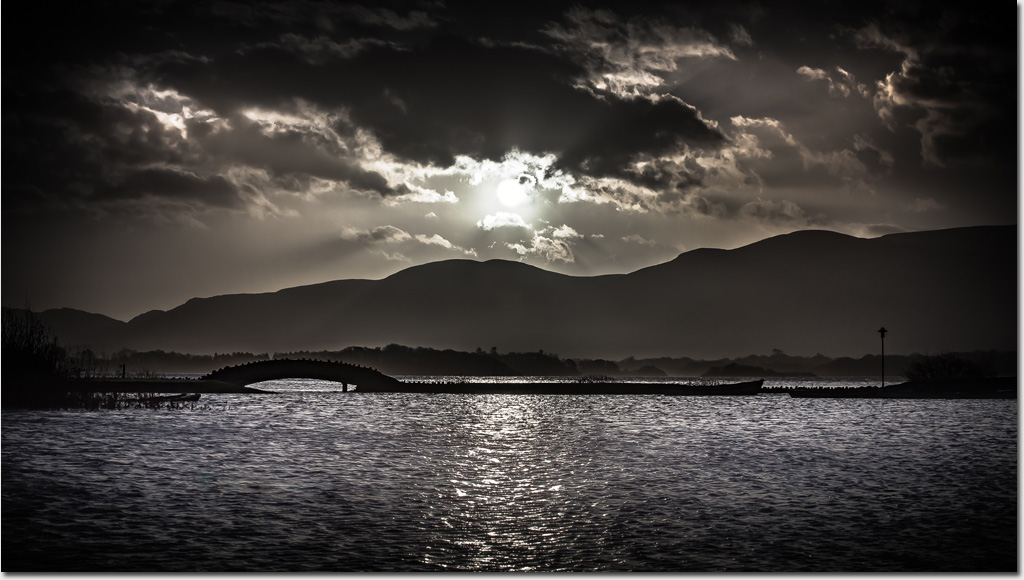
Context is everything and depending on who you are this might be a scene of tranquility or a scene of distress.
Below the thin dark line to the right of the bridge is a wall with a large sign 'Welcome To The Killeen Course'.
Further down below that dappled lake's surface is asphalt marked with white lines where in normal times golfers cars would be parked.
Fishing boats tied up to a small wharf have either been torn away or drowned as their lines lost slack in the rising water.
The Killarney Golf Clubhouse off to the right had been cut off for days and only just become accessible again albeit via a short crossing driving through thigh deep water.
Despite the flooding, there are some golfers out enjoying a very different course.
Photo: Robert Rath, 'Context', 1/4000s f/14 ISO160 70mm
Wednesday, March 2. 2016

I spotted Dromaneen Castle on the other side of the Blackwater River while on the road from Mallow to Killarney and there ensued an all morning effort to get close enough to photograph this old Irish ruin.
After several dead ends, wrong turns and traversals down roads more suited to goats and cows than cars I was about to give up when I noticed two men with guns and hunting dogs in a field with a big sign on the gate which read 'no hunting'. Clearly these were locals. Although it was cold and raining I got out of my car and introduced myself. After a short conversation they were kind enough to give me directions to a nearby private farm where the ruins could be found, all the while looking at me with doubtful suspicion. With their thick accents and words merging into words I did not understand most of that conversation however I found out what I needed and I am sure they found some amusement in my equally strange Australian accent.
I had a similar experience with John who owned the property I finally found at the end of yet another dead end road. I was initially eyed with suspicion as I approached him going about his 'farming' business however my Australian accent again proved an ice breaker and he was more than helpful inviting me to drive through his property to shorten my walk. He then looked down at my shoes, shook his head and told me I'd need a decent pair of wellington boots. I said I'd cope! His warning was more poignant than I had imaged as the deep mud in the encircling field was just as much composed of cow manure as it was soil.
Dromaneen Castle is, or should I say was, not so much a castle but a stately 400 year old manor house which has had many occupants in all those years and had been actively lived in right up until 1940 when it was gutted by fire and abandoned.
I am glad I made the effort to get close enough to these ruins to capture its remaining pride and imagine what it might have been like living here.
Photo: Robert Rath, 'Dromaneen Castle', 1/80s f/9 ISO160 17mm
Monday, February 29. 2016
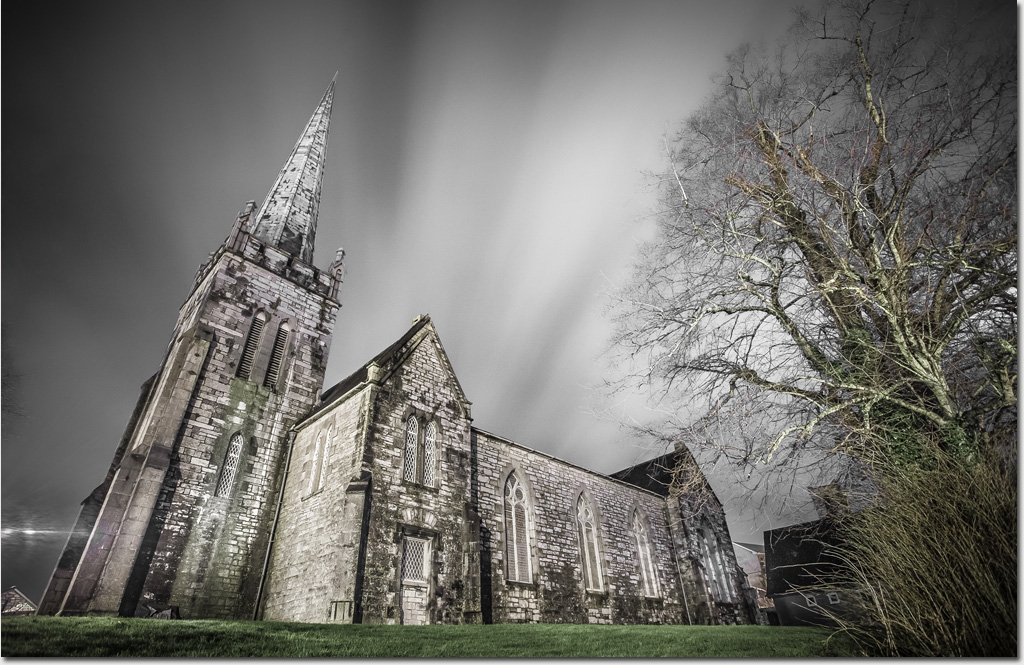
You could be forgiven in thinking this gothic style church hidden away in the side streets of Mallow is old. At nearly 200 years it is old by shopping mall standards but not nearly as old as many other churches in Ireland. Still, despite its age, the immaculate condition is a credit to to those entrusted with its upkeep for all those years.
When I came to photograph Saint James' Church I was initially disappointed that it was not lit up like many other significant churches. Very quickly I realised just how much of a blessing this turned out to be.
A moody overcast sky lit by both moonlight and by town light created a very sacred feel here as I let long exposure bring shrouded details into view on the walls, windows and spire.
I left feeling quite privileged and pondering the pride its worshipers must feel in this beautiful old building.
Photo: Robert Rath, 'The Church of Saint James', 30s f/7.1 ISO500 17mm
Saturday, February 27. 2016
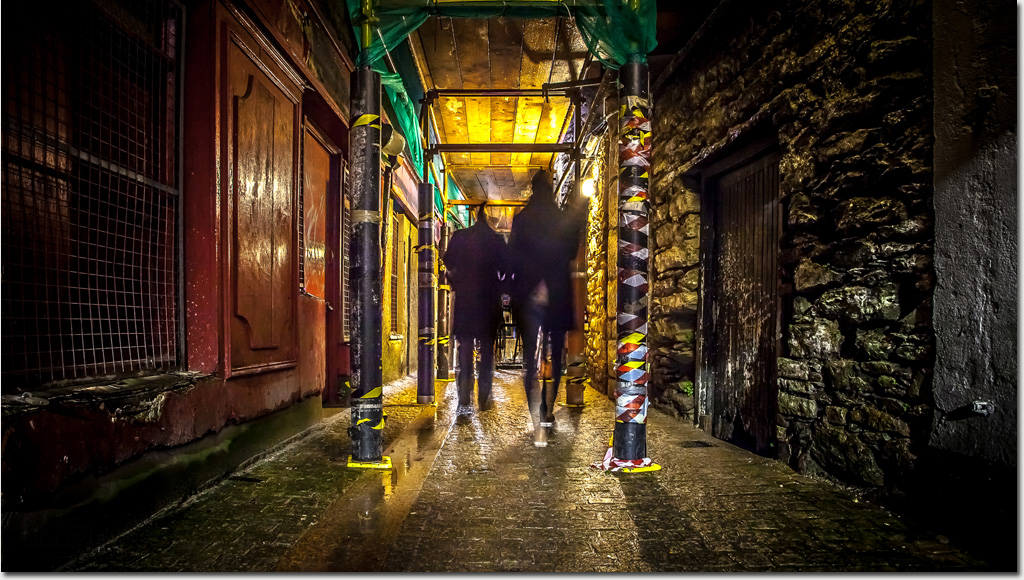
I can think of any of number of reasons why I might not.
It's late at night.
The ally is narrow and very confined.
Dodgy looking doorways with who knows what's lurking behind.
Less than robust looking scaffolding.
Dark cloaked figures.
I can think of any of number of reasons why I might.
A shortcut between places.
A respite from the heavy rain.
Local pubs hidden away from transient visitors.
Photographic possibilities.
... under the Clock Tower in the Irish town of Mallow.
Photo: Robert Rath, 'Walk This Way', 0.8s f/6.3 ISO400 17mm
Friday, February 26. 2016
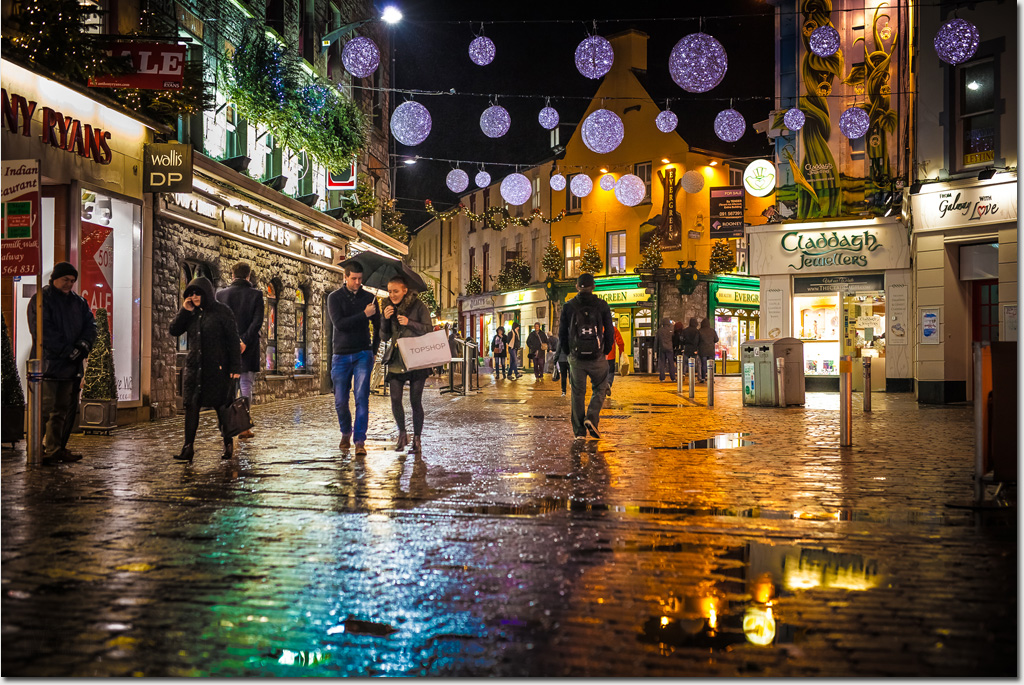
Back in December we had the good fortune to experience an Irish Christmas.
I can't begin to describe the differences between a wet Irish Winter and a hot Adelaide summer but needless to say there was considerable culture readjustment in both directions.
This blustery evening in Galway on Ireland's west coast ended in us getting drenched to the core with a valuable lesson in dressing for the climate, ... a lesson for next time!
On our return we experienced the surreal of both a European Winter and an Australian Summer in the same day. It grounds me in the fact that all of these different worlds are one in the same, ... our world.
Photo: Robert Rath, 'A Different World', 1/100s f/14 ISO100 100mm
Thursday, February 25. 2016
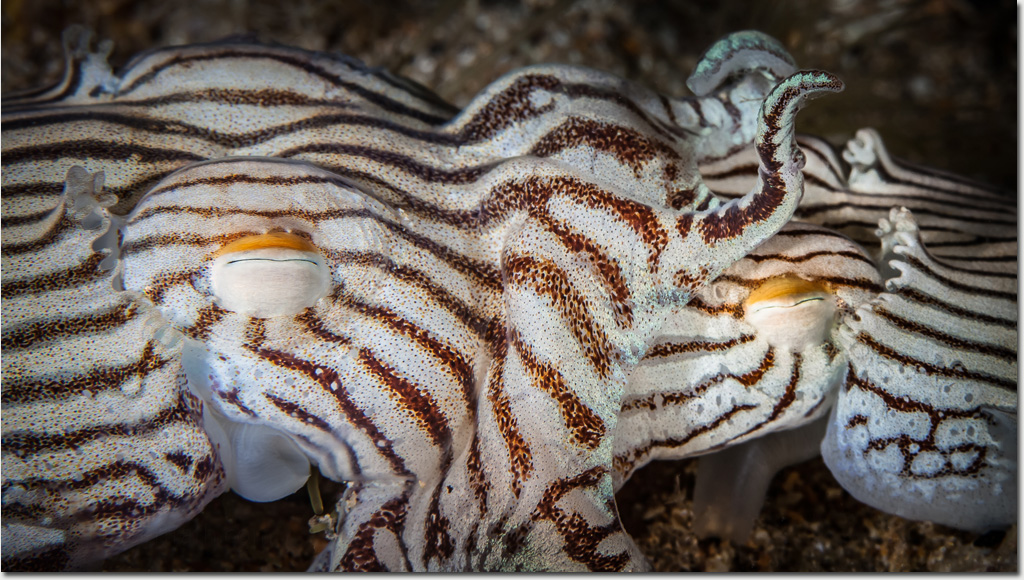
This is the kind of image I could show my mother and she'd be none the wiser as to what she was looking at. If she really knew what was going on here she'd probably blush and respond with a 'that's nice dear'.
These Lined Dumpling Squid ,also know as Pyjama Squid (Sepioloidea lineolata), are obviously engaged in a private activity but unlike most humans they do not seem to care one little bit about my photographic intrusion.
I can say however that their closed eyes has more to do with my blinding lights rather than them being in the moment.
We saw about ten pyjama squid on this recent Edithburgh night. It is wonderful to see so many of these critters out and about and the variety of their nocturnal activities.
Photo: Robert Rath, 'Pyjama Love', 1/100s f/14 ISO100 100mm
Monday, February 22. 2016
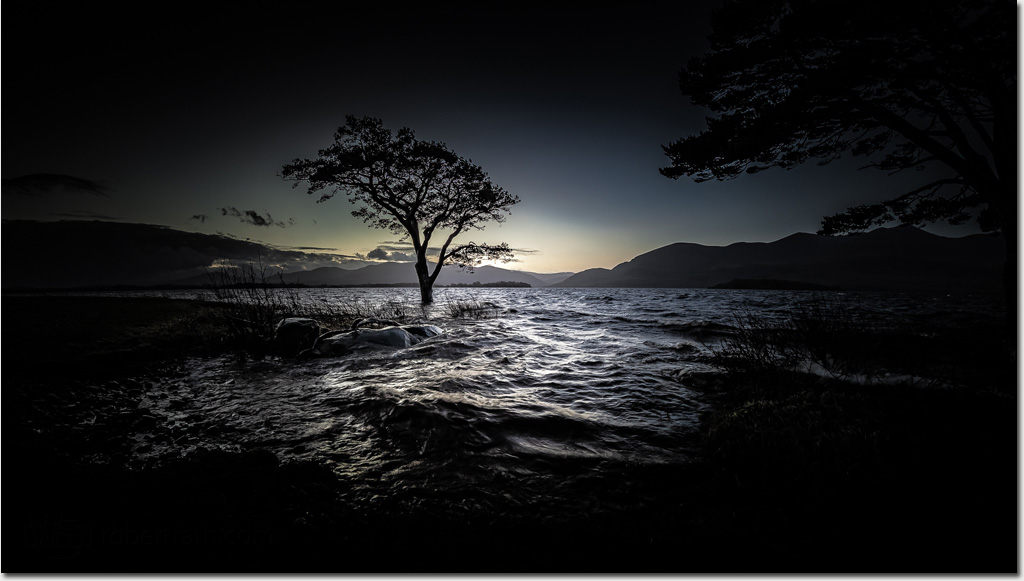
It might be the first light of a Lake Killarney dawn but there is nothing tranquil or serene here.
The battered shoreline strewn with debris and the dirty brown froth, barely visible in the gloomy half light, hints at night's fury now abating.
If I wait long enough tranquility might return but I don't like my chances.
Photo: Robert Rath, 'First Light', 1/25s f/9 ISO320 15mm

Before I started diving I expected all the fish living in temperate waters to be silvery and those in tropical waters to be colourful.
My logic was simple, I'd only every caught silvery fish with my dad while growing up and I'd only ever seen brightly coloured fish in marine documentaries of tropical locations.
I can't say enough how glad I was to discover my logic was just a little flawed.
This juvenile Victorian Scalyfin (Parma victoriae), of the same family as tropical butterfly fish, was one of the first I discovered to be as bright and colorful as its tropical cousins.
From there the colour kept on coming as I discovered just how colourful the fish of our temperate waters really were.
Photo: Robert Rath, 'Aquatic Butterfly', 1/200s f/4.5 ISO160 50mm
Saturday, February 20. 2016
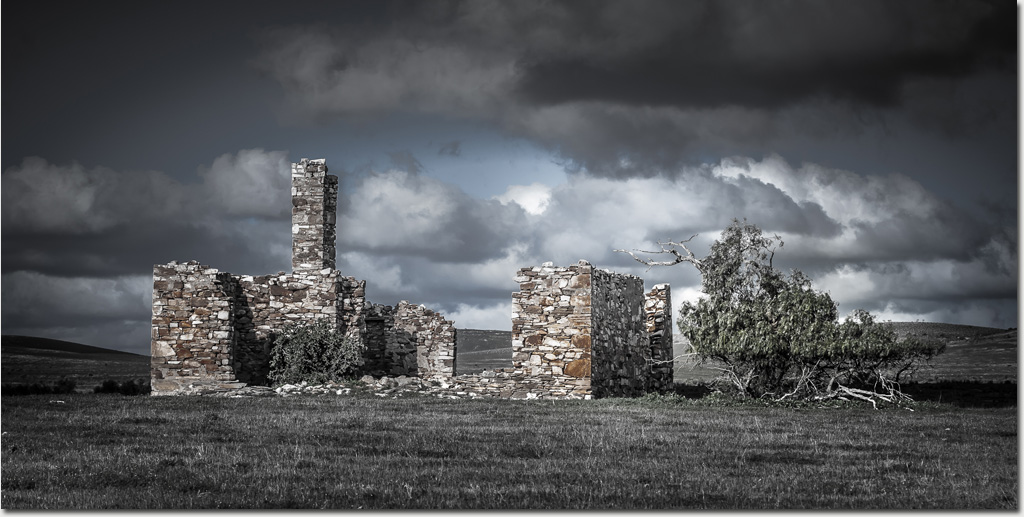
There is an imaginary line running through the north of South Australia called Goyder's Line which it was determined that farming above the line would be unviable to early settlers.
Following a long period of yearly above average rainfall many farmers decided to shun the warning and establish cropping farmland well to the north of the no-go boundary. In almost every case, nature had the last say in the matter and reclaimed its own back.
The ruins of this abandoned farmhouse near Hawker in South Australia's mid-north are a repeated sight all over this region. A poignant reminder that nature takes no prisoners.
Photo: Robert Rath, 'No Prisoners', 1/250s f/6.3 ISO100 70mm
Friday, February 19. 2016
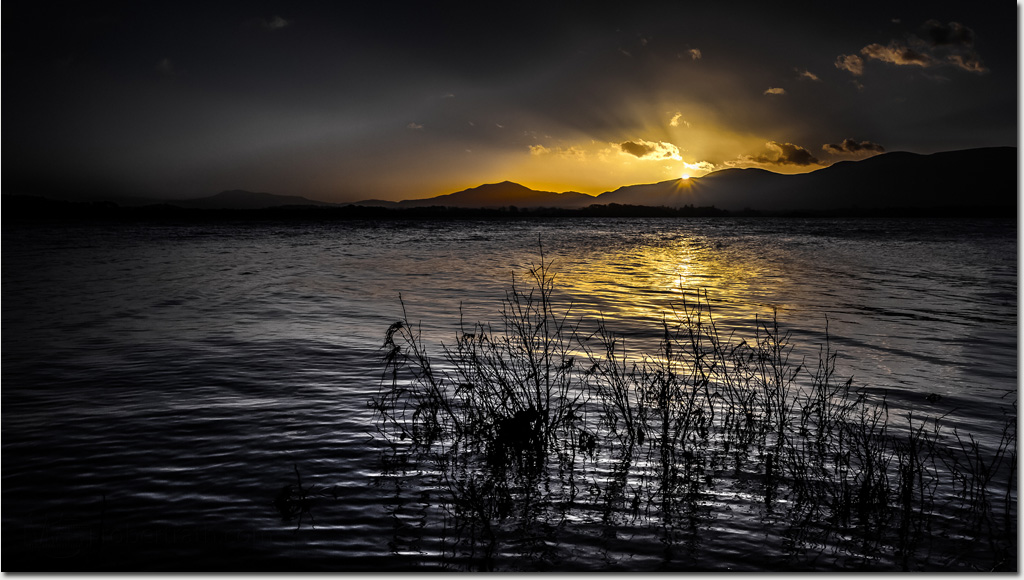
If there is one lesson I have learned in creating images is the simple act of showing up. Sometimes, showing up is easy, other times it borders on a sheer act of will against everything going against you!
I had one morning opportunity to visit the beautiful lakes region of Killarney in Ireland on my own such that I was free to go where I wanted and spend as much time as I liked. The weather had not looked good the days leading up and the forecast was not much better. Still I dragged myself out into the car in the rain, the wind and the pitch black winter's morning and set out on the hour long drive from were we were staying.
When I arrived at the shore of Lake Killarney it was still pitch black, raining and blowing a gale and I nearly drove into the lake thinking I was crossing a ford, that's how miserable it was. It was then I realised I was still on continental Europe time and it would be a long wait before there would any light at all.
To cut a long story short it eventually stopped raining, the wind started to ease off and then well into the morning light the clouds miraculously thinned away and then the sun rose over Lake Killarney.
I'm glad I showed up for this one.
Photo: Robert Rath, 'Killarney Dawn', 1/320s f/16 ISO160 29mm
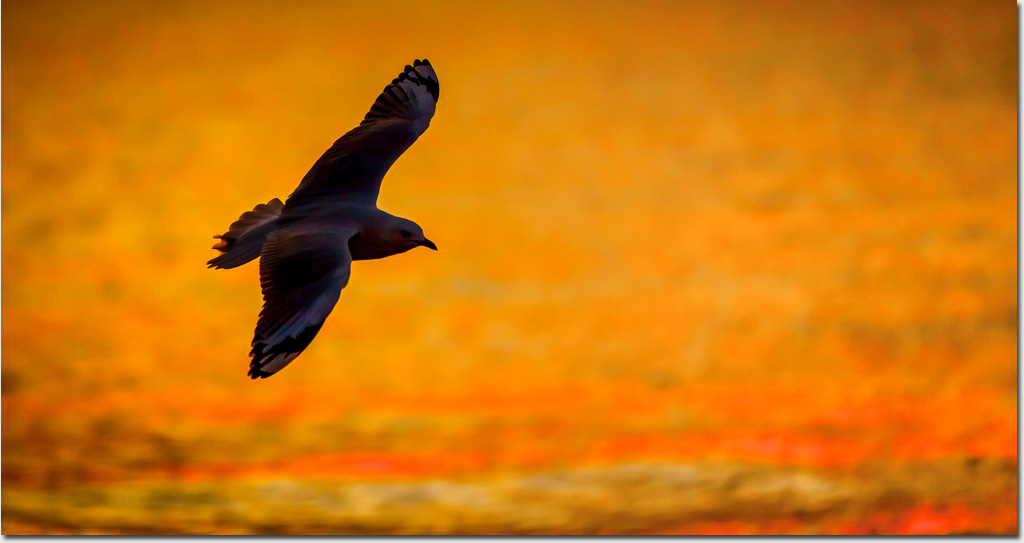
Features almost hidden in the glowing gold of sunset, almost a silhouette but just enough light to make out the texture of the seagull's feathers.
This is a special time of the evening to be down on the beach watching the world fly by.
Photo: Robert Rath, 'Fly By', 1/5000s f/2.8 ISO400 200mm
Wednesday, February 17. 2016
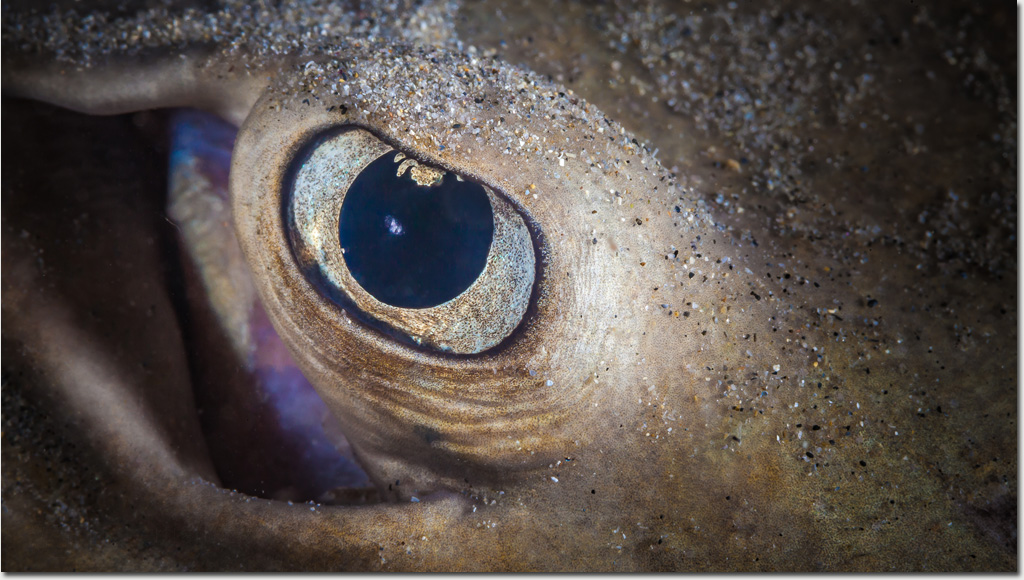
All divers who venture into the world of macro photography have a story or two about the giant bull ray or the swimming elephant that swam on up, peered over their shoulder, wondered for moment what ever could be that small and still be interesting before of swimming off again. Usually the first the diver even hears about the swimming elephant or the school of tuna they missed is from his or her excited buddy during debriefing over drinks.
This is my love hate relationship with the world of the macro. This time however the stingray rested quietly as I crept up, inching closer and closer, belly dragging through the sand.
That watchful eye never left me as we both wondered how close we could push it. Finally I dared not get any closer and captured that beautiful stingray gaze watching, wondering and waiting.
With that I crept back again creating space between us before rising and swimming away leaving nothing but belly scrapes in the sand and an undisturbed repose.
Photo: Robert Rath, ‘Watching Waiting Wondering' 1/160s f/22 ISO400 100mm
Tuesday, February 16. 2016
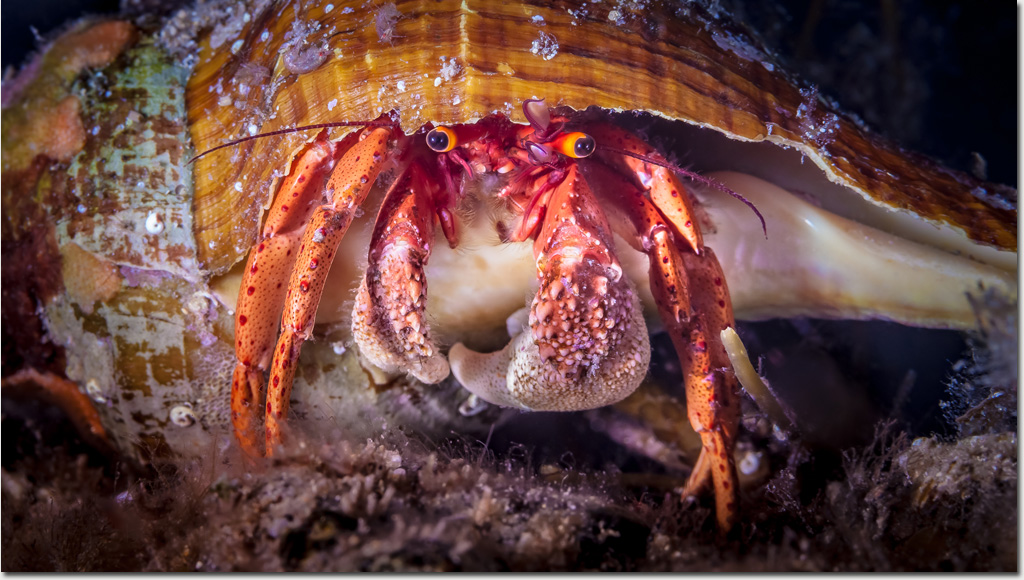
I immensely dislike the expression 'low hanging fruit' but when it comes to naturally photogenic, patient, and easy to photograph critters then hermit crabs fit the category.
This Hermit Crab ( Paguristes frontalisi) under Edithburgh Jetty is wearing a shell that is probably a new acquisition and watching it struggle around with a shell two sizes too big borders on the comical.
Looking at the way the leading edge of the shell has been cracked away I'd say the most recent tenant made some futile attempts at home renovation before abandoning it in search of a larger home.
For now this guy has room to shake, rattle and space to grow.
Photo: Robert Rath, ‘Shake, Rattle and Grow', 1/100s f16 ISO400 100mm
Monday, February 15. 2016
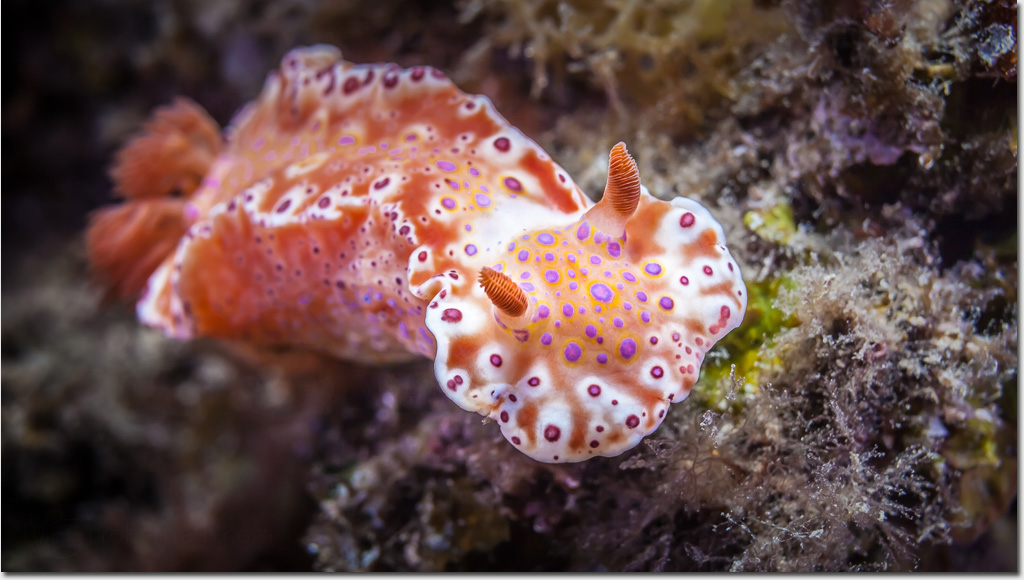
Our most common nudibranch (well at least I think it is) is Ceratosoma brevicaudatum and I still have no idea if it has a common name.
It's big as far as nudibranchs go. It is bright orange which makes it visible from meters away. Yet still many divers swim right on by.
I will confess that it was more than 20 years before I saw my first nudibranch. Quite simply, if it wasn't swimming, I didn't see it.
Underwater photography has completely changed the way I dive and the things I see diving. I'd recommend taking a camera underwater to all new divers once they have gained some water confidence.
Nudibranachs are just one of the many critters that have brought the little things underwater to life for me.
Photo: Robert Rath, ‘The Little Things', 1/160s f8 ISO100 100mm
Sunday, February 14. 2016

Happy Valentine's Day!
Photo: Robert Rath, 'Valentine Rose' 2.3s f/2.8 ISO200 100mm
Saturday, February 13. 2016
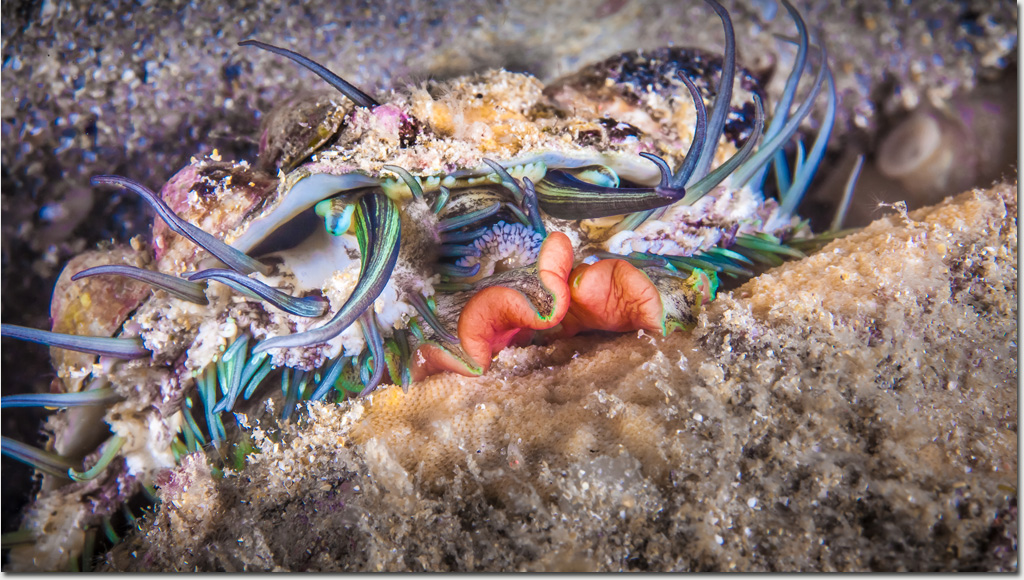
I have photographed hunting Blacklip Abalone ( Haliotis rubra), at Port Noarlunga before and commented on their utterly mad night time appearance of green eyes, tentacles and snailfish encrusted shell.
Observing images like this afterwards is always an eye opening lesson in observation for me. While photographing this guy, all I noticed as the abalone made its way across the reef was the abalone. On closer scrutiny, looking at a larger image in the comfort of sitting at my desk, I noticed something more. Can you see that this abalone is on the menu for dinner? It will not be a human that consumes this delicacy this evening but the stalking octopus creeping up from behind!
Next time I will be on the lookout for the bigger story unfolding in the scene.
Photo: Robert Rath, 'Abalone on the Menu' 1/160s f/22 ISO400 100mm
Thursday, February 11. 2016
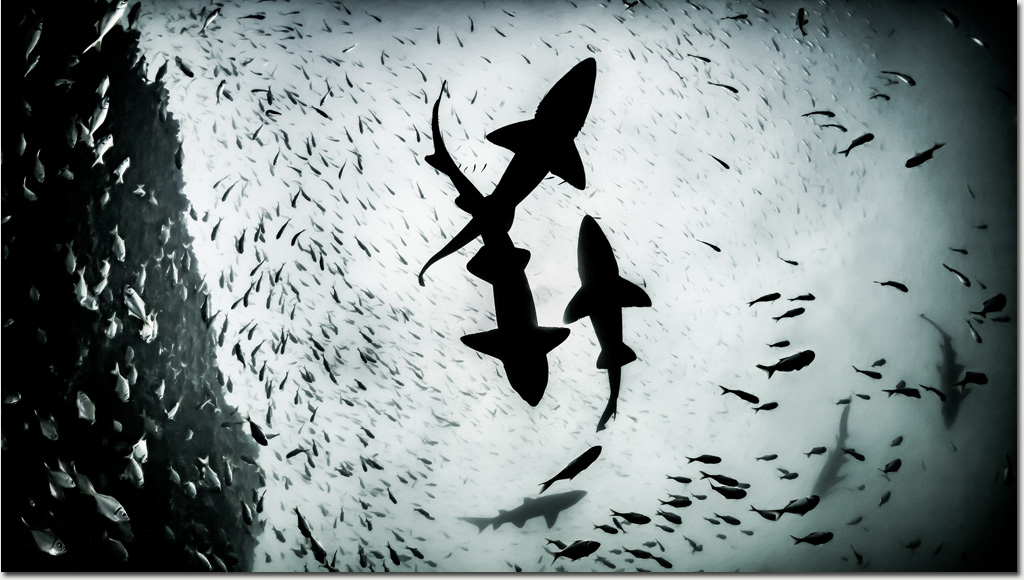
Just like looking out for overhead power lines it pays to look up when diving.
We teach new divers that they should never put themselves into a position where they can not make an immediate ascent to the surface if they come into difficulty.
It's all very well to be taught to be a good dive buddy, to be vigilant and always at the ready to assist your dive buddy should a problem arise but how often is that vigilance really put to the test.
More often than not when a manageable crisis arises, divers head straight up regardless of their buddy.
So remember to look up, there may be danger overhead.
Photo: Robert Rath, 'Danger Overhead', 1/160s f/22 ISO320 15mm
Tuesday, February 9. 2016
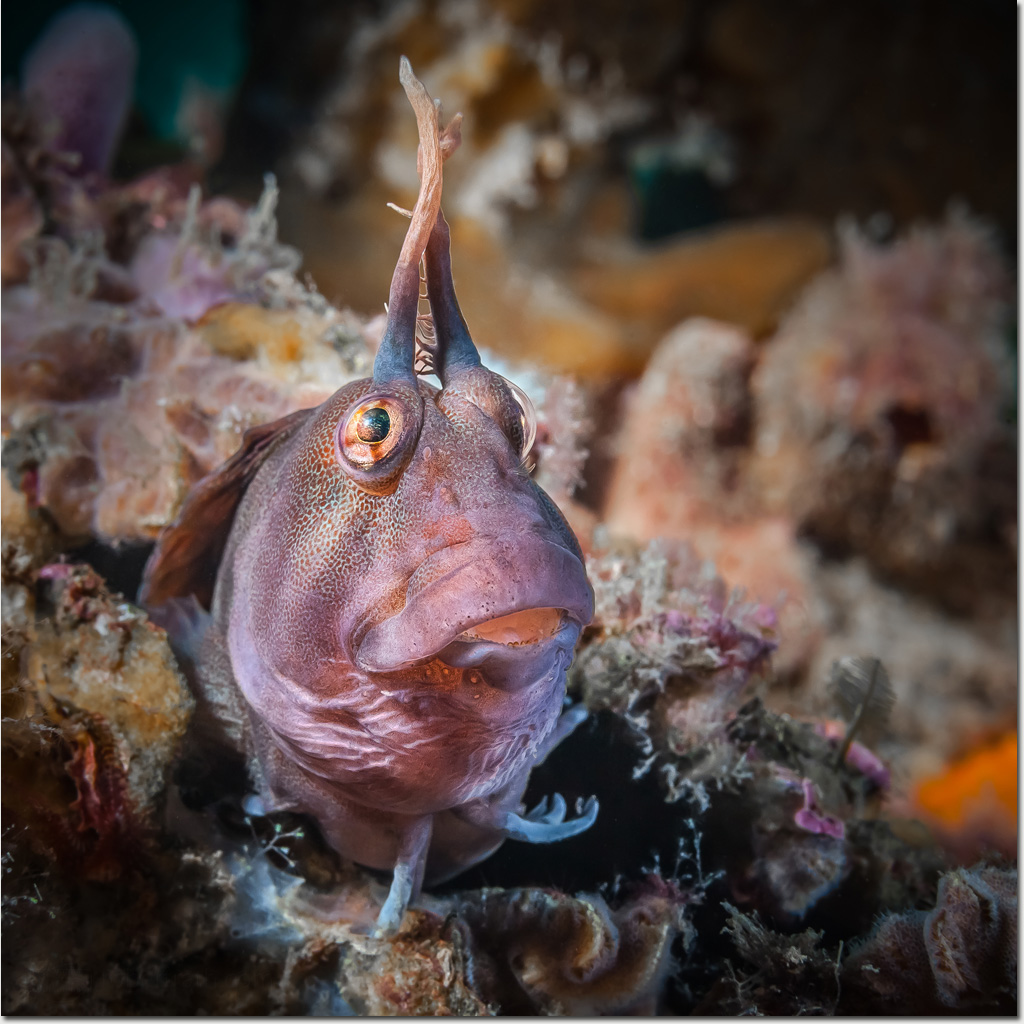
The Tasmanian Blenny, ( Parablennius tasmanianus), is one of those wonderful little critters which can make you smile or even laugh underwater.
Cute, cheeky and full of attitude they will play peek-a-boo with a diver and camera for as long as your patience or tolerance to cold water will last.
This little guy had a cosy little niche in a jetty pylon under Edithburgh Jetty surrounded by a garden of corals, sponges, scallops and algae. The best part for him is that the garden looks after itself!
Next time you spot a blenny on a dive take the time to have a little fun with it. I am sure you will end up with a grin behind your mask.
Photo: Robert Rath, 'Benny', 1/100s f/14 ISO400 50mm
Monday, February 8. 2016
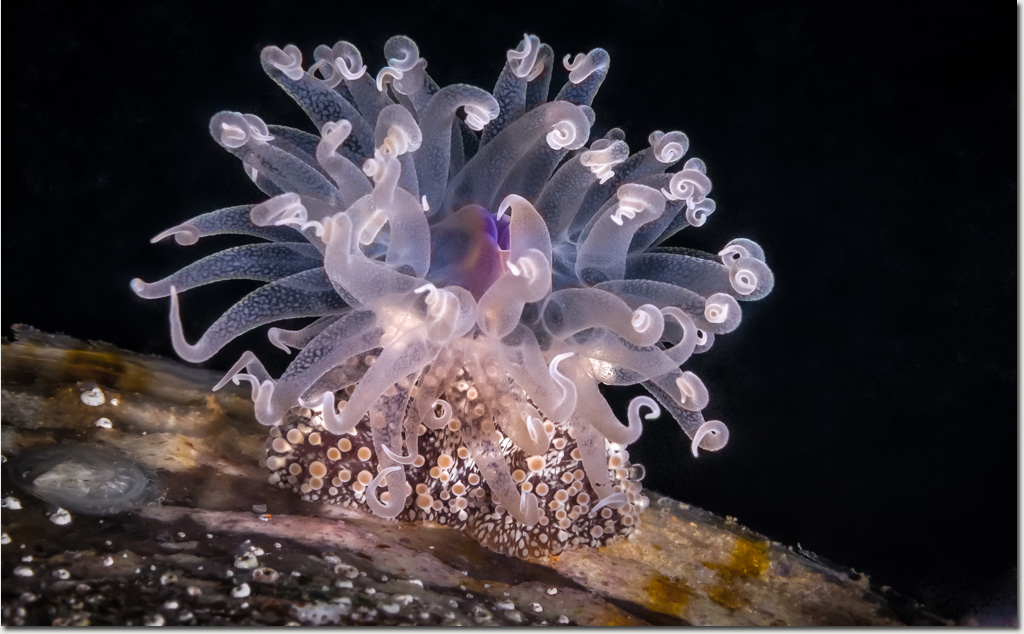
Can you just imagine for a moment at the end of each tentacle a pair of eyes, a mouth and fangs!? Good thing it's not Medusa or I might have become too heavy to swim back to the surface again.
Anemones are usually associated tropical waters, large masses of waving tentacles and cute little anemone fish darting in and out of view. Anemones are however as widespread as there is ocean.
This wonderful little creature perched atop a razor fish is just one of the many species we have here in local South Australian coastal waters.
The minimal number of translucent tentacles, that granular column wall and the velvety oral disk make this anemone just as gorgeous as its tropical cousins and a real little monster.
Photo: Robert Rath, 'Medusa', 1/160s f/22 ISO400 100mm
Sunday, February 7. 2016
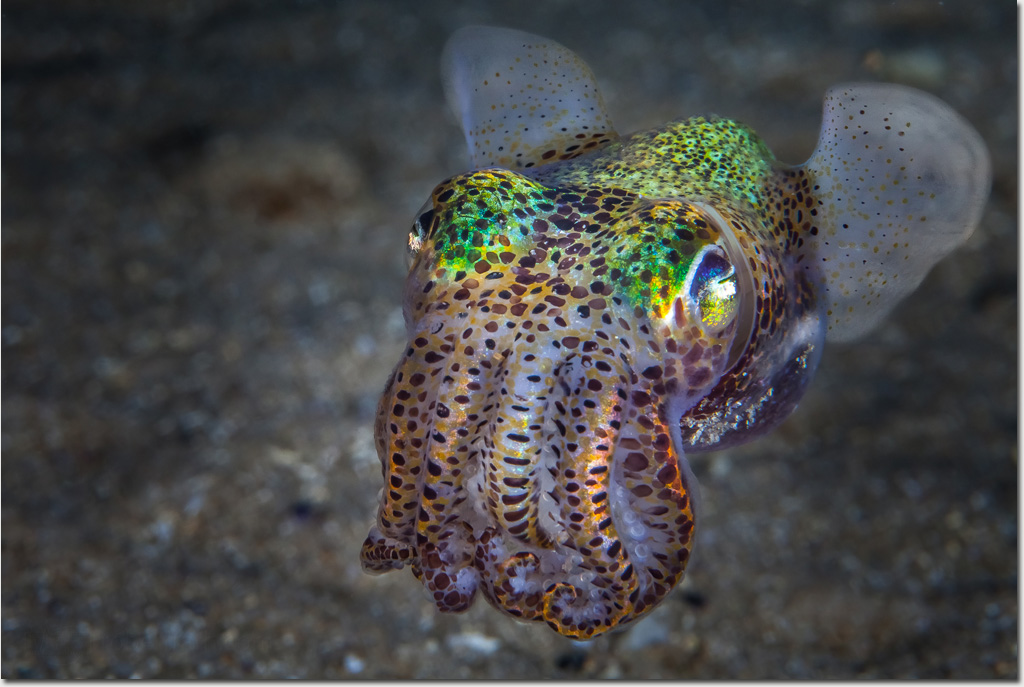
Back home again and what better place to jump back into local water again than a midnight dive at Port Noarlunga.
The visibility was not great, there was some surge and a strong current but nothing stopping another great macro photography session.
There was not much critter action around aside from a huge amount of shellfish mating taking place in the southern weedbeds. My original plan for the dive was to find and photograph nudibranchs but my tally for the night was a big zero.
One highlight of my dive was this awesomely colourful Southern Dumpling Squid, Euprymna tasmanicas. The amazing colours in the dumpling squid are due to the chromataphores in the skin. Using the chromataphores the dumpling squid is able to change its colours to either camouflage or make itself aggressive as needs arise. On a dark night the squid's chromataphores resume this natural colourful state captured in the camera's strobe.
After a very pleasant 2 hours underwater we surfaced to an abandoned jetty, no jetty lights and a starry night sky.
Photo: Robert Rath, 'Creature of Colours', 1/160s f/22 ISO400 100mm
|